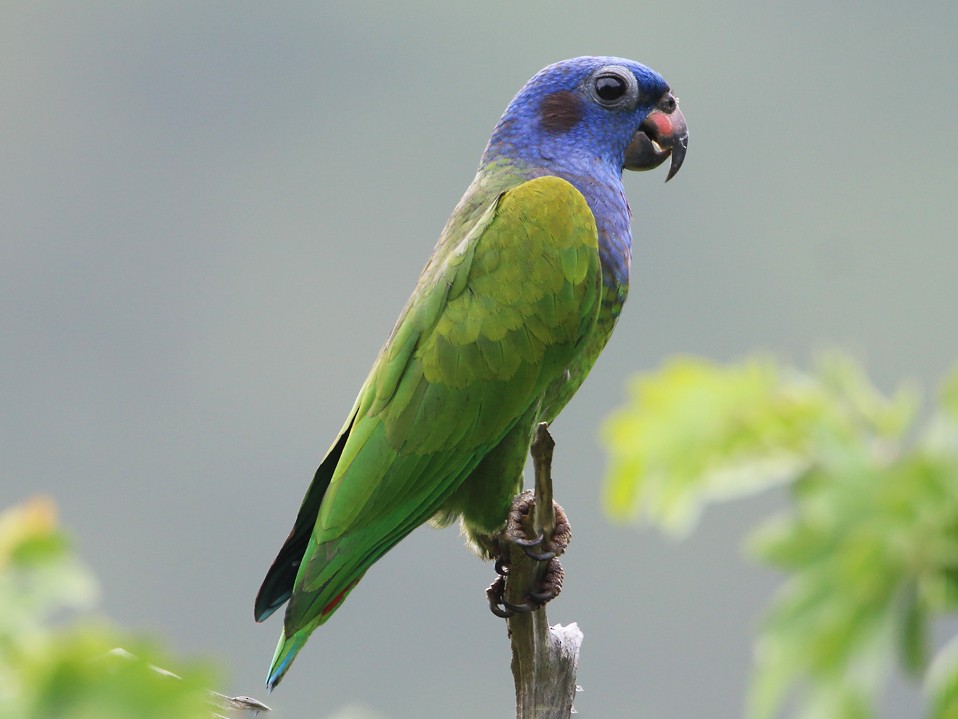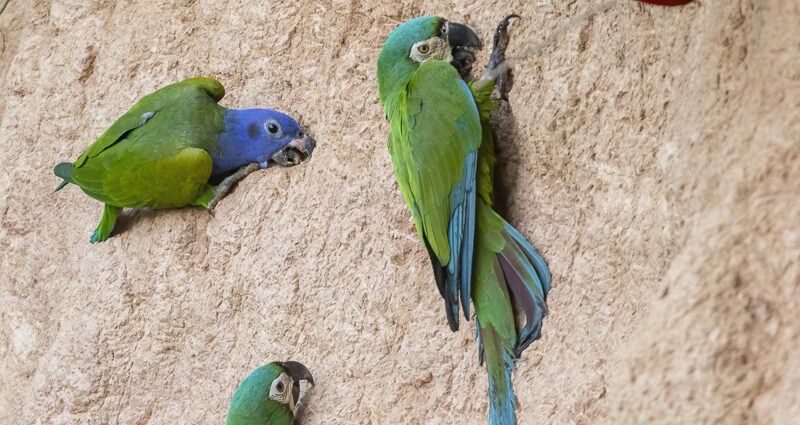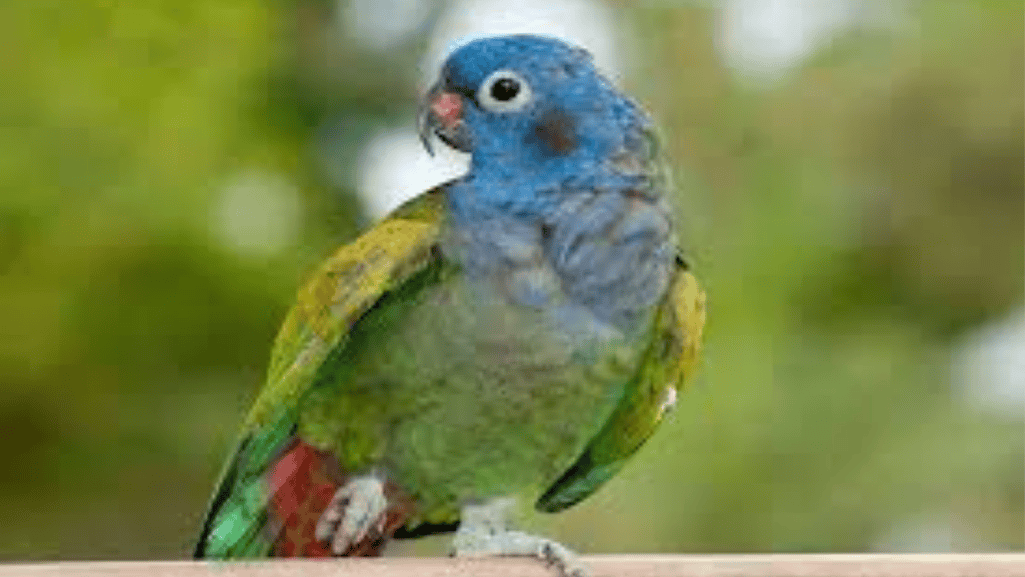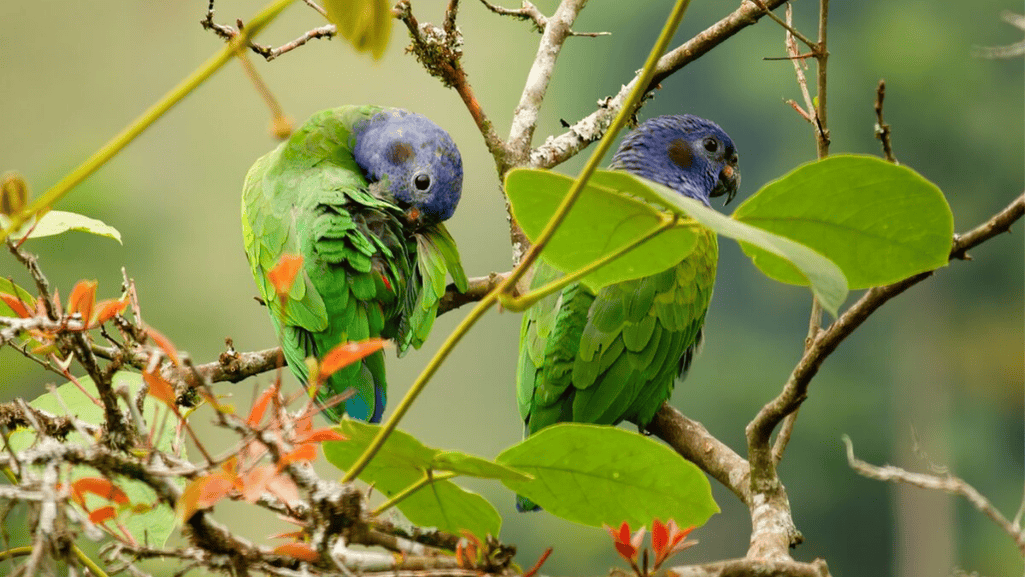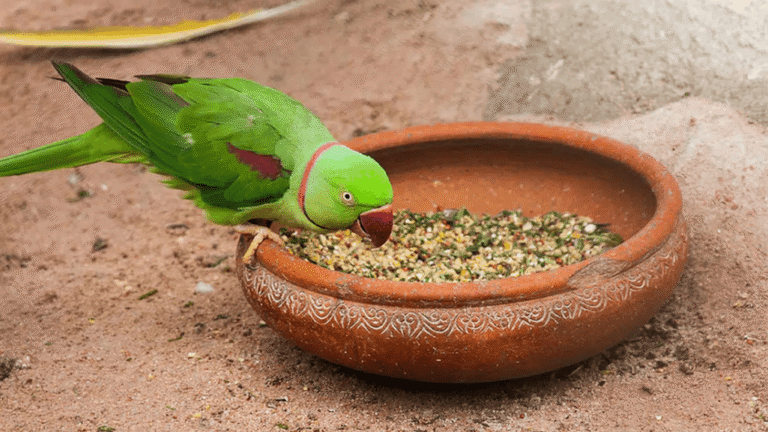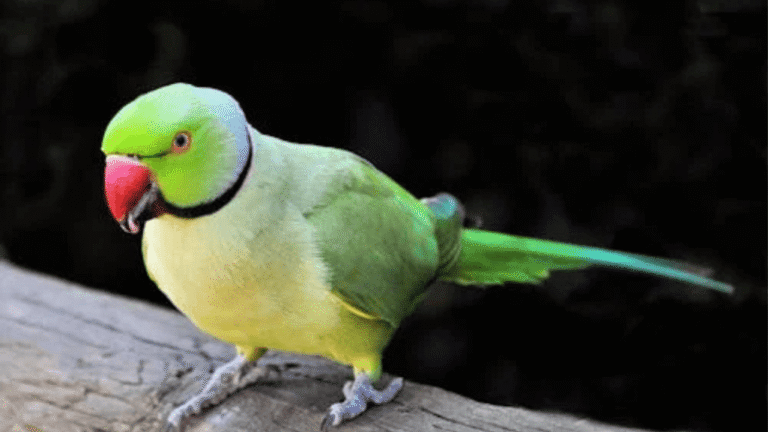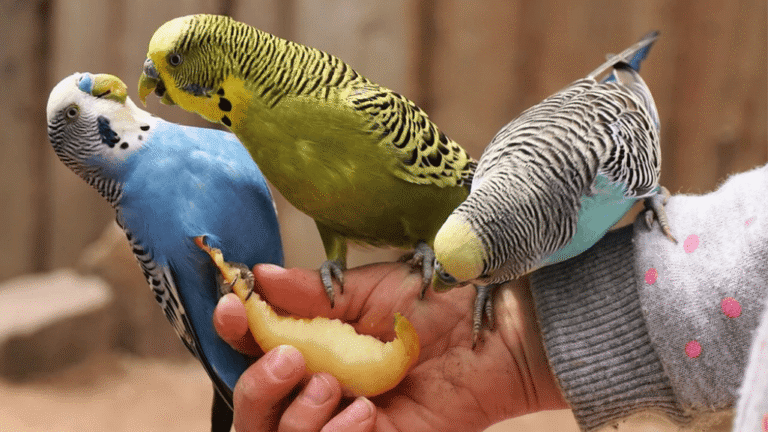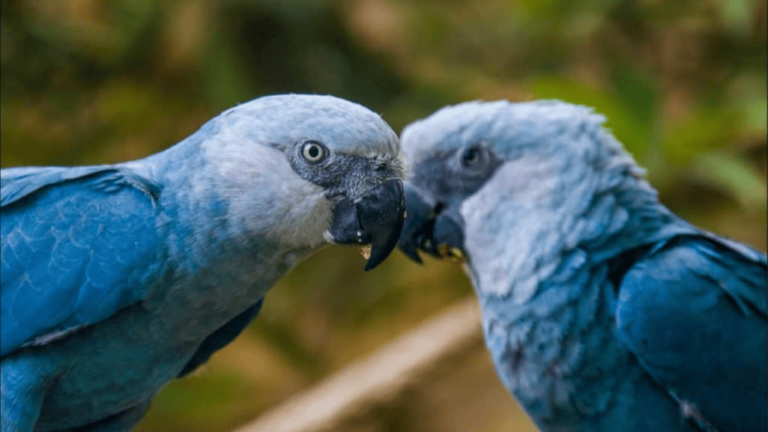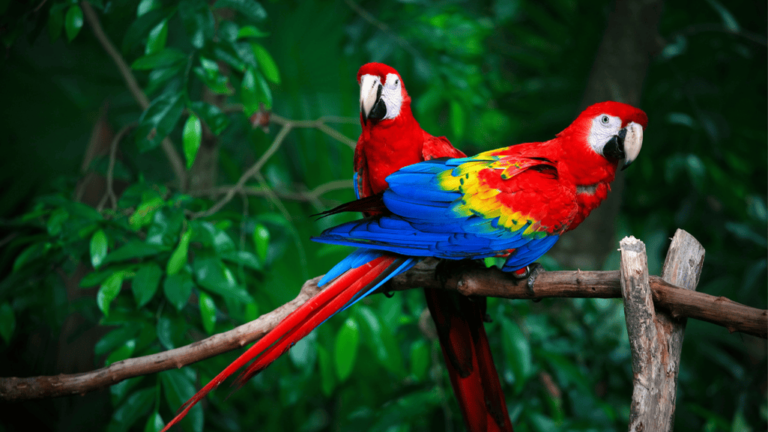Are you fascinated by parrots and their colorful feathers? If so, you’ll be captivated by the Blue Headed Parrot, a stunning parrot species renowned for its vibrant blue head and neck. In this article, we’ll delve into the fascinating world of the Blue Headed Parrot, exploring its origins, physical characteristics, behavior, and more. So, let’s dive into the world of this enchanting parrot species!
Key Takeaways:
- The Blue Headed Parrot is a medium-sized parrot native to South America and southern Central America.
- It is primarily green in color, with a striking blue head and neck.
- Blue Headed Parrots are known for their affectionate temperament and relative quietness.
- They inhabit forest and semi-open country habitats in tropical and subtropical regions.
- The Blue Headed Parrot is classified as Least Concern on the IUCN Red List of Threatened Species.
Habitat and Distribution of the Blue Headed Parrot
The Blue Headed Parrot, also known as the Blue Headed Pionus, is native to the tropical and subtropical regions of South and Central America. This vibrant parrot species can be found in a variety of habitats, including forests, semi-open country areas, and even cultivated regions. They thrive in humid or semi-humid environments, but can also adapt to drier habitats along rivers.
Blue Headed Parrots are typically seen in small flocks, which contributes to the lively sounds of their environment.
Blue Headed Parrots have a wide distribution range that extends from Costa Rica, Venezuela, and Trinidad in Central America and the Caribbean, all the way down to Bolivia and Brazil in South America. These birds are known to explore different regions within their range, seeking out areas with plentiful food sources and suitable nesting sites.
Their ability to adapt to different habitats has contributed to their successful presence in various countries throughout the region. However, it is important to note that deforestation and habitat loss pose potential threats to the population of Blue Headed Parrots, underscoring the need for conservation measures to protect their natural habitats.
Physical Characteristics of the Blue Headed Parrot
The Blue Headed Parrot is a visually stunning bird species with unique physical characteristics. Measuring approximately 27 cm (10.6 inches) in length, this medium-sized parrot has a stocky build and a predominantly green body. However, it is the vibrant blue head and neck that truly sets this species apart. The blue feathers create a striking contrast against the green plumage, making the Blue Headed Parrot instantly recognizable and captivating to behold.
Blue-headed Parrots acquire their distinctive blue heads only after they reach their adult plumage, which occurs at around one year of age.
In addition to its blue head, the Blue Headed Parrot also sports red undertail coverts, adding another touch of color to its appearance. It’s worth noting that juveniles may have less blue on their heads and may even display red or pinkish feathers around their ceres, which further adds to their charm. Interestingly, both male and female Blue Headed Parrots have similar physical characteristics, making it challenging to distinguish between the sexes based on appearance alone.
The Blue Headed Parrot’s colorful plumage not only serves an aesthetic purpose but also plays a vital role in their natural habitat. The vibrant colors help these birds blend into the dense foliage of the rainforest, providing them with camouflage and protection from predators. Their physical characteristics not only contribute to their visual appeal but also serve as an adaptation for survival in their native environments.
Behavior and Vocalizations of the Blue Headed Parrot
The Blue Headed Parrot is a fascinating bird known for its unique behaviors and vocalizations. Understanding their behavior can help parrot owners provide the best care and create a harmonious environment for their feathered friends.
Behavior
Blue Headed Parrots are social creatures that thrive on interaction and mental stimulation. They enjoy spending time with their human caregivers and can develop strong bonds with them. These parrots are intelligent and curious, requiring plenty of mental and physical exercise to prevent boredom.
Blue-headed Parrots are typically seen in small flocks, which contributes to their social behavior and vocalizations.
One of their notable behaviors is their communal roosting. Blue Headed Parrots can be found roosting in large numbers, often in palm or other trees. This behavior not only provides safety in numbers but also allows them to socialize and interact with other members of their flock.
Additionally, Blue Headed Parrots are known for their strong foraging instincts. They love to explore their environment and search for food. Providing them with toys and puzzles that encourage foraging behavior can help keep their minds active and prevent boredom.
Vocalizations
The Blue Headed Parrot is a noisy bird that uses vocalizations to communicate with its flock and express its needs. They are known to make light, high-pitched squeaking and sweenk calls, which can vary in intensity and pitch depending on the situation. These vocalizations can be a way to seek attention, express excitement, or communicate with other parrots.
“The vocalizations of the Blue Headed Parrot are a significant part of their natural behavior and should be expected by their owners. It is essential to provide them with a suitable environment where they can vocalize without disturbance,” says Dr. Jane Peterson, an avian behavior specialist.
Blue Headed Parrots may also mimic sounds they hear in their environment, such as household noises or the calls of other birds. While they are not known for their talking ability like some other parrot species, they can still learn to mimic a few words or phrases with proper training and socialization.
Behavior | Vocalizations |
|---|---|
Social and curious | Light, high-pitched squeaking and sweenk calls |
Communal roosting | Mimics sounds in the environment |
Strong foraging instincts | Limited talking ability |
Understanding the behavior and vocalizations of the Blue Headed Parrot can help parrot owners create a stimulating and enriching environment for their pets. By providing opportunities for socialization, mental stimulation, and appropriate outlets for vocalization, owners can ensure the well-being and happiness of their Blue Headed Parrot companions.
Conservation Status of the Blue Headed Parrot
The Blue Headed Parrot is currently classified as Least Concern on the IUCN Red List of Threatened Species, indicating that it is not at immediate risk of extinction. However, it is important to note that the conservation status of this species does not guarantee its long-term survival. The Blue Headed Parrot faces several threats in the wild, primarily due to habitat loss and fragmentation caused by deforestation. The conversion of forested areas into agricultural land and urban development is reducing the available habitat for these birds.
Blue-headed Parrots typically breed in tree cavities, where they lay around 3 to 5 eggs.
Additionally, the illegal pet trade poses a significant threat to the Blue Headed Parrot population. They are often captured from the wild and sold as pets, which not only disrupts their natural populations but also contributes to their declining numbers. Conservation efforts are being made to address these issues and protect this species.
It is crucial to raise awareness about the conservation needs of the Blue Headed Parrot and promote responsible pet ownership. By supporting initiatives that focus on habitat preservation, sustainable practices, and combating illegal wildlife trade, we can contribute to the long-term survival of this beautiful bird species.
Threats to the Blue Headed Parrot
The main threats to the Blue Headed Parrot’s survival are:
Habitat Loss: Deforestation and land conversion for agriculture and human settlements are destroying the bird’s natural habitat.
Illegal Pet Trade: Blue Headed Parrots are often captured from the wild and sold as pets, leading to a decline in their populations.
“The conservation of the Blue Headed Parrot requires concerted efforts to protect its habitat and combat the illegal pet trade.” – Conservationist
Through conservation initiatives, habitat protection, and public education, we can work together to safeguard the Blue Headed Parrot and ensure its survival for future generations.
 Diet and Nutrition for Blue Headed Parrots
Diet and Nutrition for Blue Headed Parrots
Proper diet and nutrition are essential for the health and well-being of Blue Headed Parrots. These vibrant birds require a balanced diet that includes a variety of fresh fruits, vegetables, and a high-quality pelleted food specifically formulated for parrots. Offering a diverse range of food options ensures that they receive the necessary nutrients for optimal health.
When it comes to fruits, Blue Headed Parrots can enjoy treats such as apples, bananas, grapes, and oranges. Leafy greens like kale, spinach, and Swiss chard should also be included in their diet. It is important to wash all fruits and vegetables thoroughly and remove any seeds or pits that may be harmful to the birds.
In addition to fresh produce, Blue Headed Parrots should have access to a high-quality pelleted food that meets their nutritional requirements. These pellets are formulated to provide the necessary vitamins, minerals, and protein that parrots need to thrive. It is important to select a brand that is specifically designed for parrots and follow the recommended feeding instructions.
The Blue-headed Parrot is a notable example of the Pionus species, known for its dietary needs and social behaviors.
Table: Sample Blue Headed Parrot Diet
Food Group | Examples |
|---|---|
Fruits | Apples, bananas, grapes, oranges |
Vegetables | Kale, spinach, Swiss chard |
Pelleted Food | High-quality parrot pellets |
It is important to note that while Blue Headed Parrots enjoy a variety of foods, there are certain items that should be avoided as they can be toxic to birds. Avocado, chocolate, caffeine, and alcohol should never be fed to parrots as they can cause serious health issues. It is also crucial to provide clean water at all times and ensure that the food and water dishes are kept clean and free from contamination.
By offering a well-rounded diet and ensuring that their nutritional needs are met, Blue Headed Parrots can lead happy and healthy lives. Providing a variety of fresh fruits and vegetables, along with a high-quality parrot pellet, will help support their overall health and longevity.
 Housing and Care Requirements for Blue Headed Parrots
Housing and Care Requirements for Blue Headed Parrots
Proper housing and care are essential for the health and well-being of Blue Headed Parrots. These birds require a spacious cage that allows them room to move and exercise. The cage should be large enough for the bird to fully extend its wings and should have horizontal bars for climbing. It’s important to choose a cage made of non-toxic materials, such as stainless steel or powder-coated metal, to ensure the bird’s safety. The cage should also be furnished with perches of varying sizes and textures to promote foot health and provide mental stimulation.
In addition to a suitable cage, Blue Headed Parrots need daily out-of-cage time for supervised exercise and social interaction. They are intelligent birds that thrive on mental stimulation, so providing them with toys, puzzles, and enrichment activities is essential. These can include foraging toys, puzzle feeders, and toys that encourage problem-solving. It’s important to rotate the toys regularly to keep the bird engaged and prevent boredom.
Proper nutrition is also crucial for the health of Blue Headed Parrots. They should be offered a balanced diet that includes a variety of fresh fruits, vegetables, and a high-quality pelleted food specifically formulated for parrots. It’s important to avoid feeding them foods that may be toxic to birds, such as avocado, chocolate, caffeine, and alcohol. Clean, fresh water should be provided at all times.
Cage Size | Recommended Dimensions (Minimum) |
|---|---|
Height | 24 inches |
Width | 36 inches |
Depth | 24 inches |
Regular veterinary check-ups are important to ensure the overall health of Blue Headed Parrots. A qualified avian veterinarian can provide guidance on proper diet, behavior, and any specific health concerns related to these birds. It’s also important to maintain a clean and hygienic environment for the bird, including regularly cleaning the cage, perches, and food and water dishes.
By providing a suitable housing environment, regular exercise, proper nutrition, and veterinary care, you can ensure that your Blue Headed Parrot leads a happy and healthy life.
 Training and Socialization of Blue Headed Parrots
Training and Socialization of Blue Headed Parrots
Training and socialization are essential aspects of owning a Blue Headed Parrot. These intelligent birds thrive on mental stimulation and enjoy learning new behaviors through positive reinforcement techniques. With patience and consistency, you can teach your Blue Headed Parrot to perform tricks, mimic sounds, and even interact with you in meaningful ways.
To start the training process, create a calm and comfortable environment for your parrot. Use treats and rewards to motivate desired behaviors, and be sure to offer plenty of praise and positive reinforcement. Clicker training can also be a useful tool in shaping your parrot’s behavior.
Socialization is equally important for Blue Headed Parrots. These birds are highly social and crave interaction with their human caregivers. It’s crucial to spend quality time with your parrot every day, engaging in activities such as talking, playing, and gentle handling. Building a strong bond with your Blue Headed Parrot will not only enhance their well-being but also create a harmonious and enjoyable relationship for both of you.
Training Tips for Blue Headed Parrots | Socialization Techniques |
|---|---|
|
|
“Training and socialization are crucial for the overall well-being of your Blue Headed Parrot. By investing time and effort into these areas, you can create a strong bond with your parrot and provide them with the mental stimulation and social interaction they need to thrive.”
Remember, every Blue Headed Parrot is unique, and it may take time to develop trust and teach new behaviors. The key is to approach training and socialization with patience, understanding, and positive reinforcement. With the right techniques and plenty of love, your Blue Headed Parrot can become a well-trained and sociable companion.
 Potential Health Issues and Veterinary Care for Blue Headed Parrots
Potential Health Issues and Veterinary Care for Blue Headed Parrots
When it comes to the health of Blue Headed Parrots, there are several potential issues that owners should be aware of. These birds can be prone to vitamin A deficiency, which can result in respiratory and digestive problems. It is important to ensure that the parrot’s diet includes foods rich in vitamin A, such as carrots, sweet potatoes, and kale.
Respiratory diseases are another concern for Blue Headed Parrots. These birds can be susceptible to infections such as psittacosis, which is caused by a bacteria called Chlamydia psittaci. Regular veterinary check-ups and a clean living environment can help prevent the spread of respiratory diseases and ensure the overall health of your parrot.
Fungal infections are another potential health issue for Blue Headed Parrots. Candidiasis, or yeast infection, can affect the digestive system of these birds. Symptoms may include weight loss, diarrhea, and loss of appetite. If you notice any of these signs, it is important to seek veterinary care as soon as possible.
Blue Headed Parrots are prone to obesity if they are not provided with a balanced diet and regular exercise. It is important to monitor their food intake and provide opportunities for physical activity to prevent weight gain. Obesity can lead to a variety of health problems, including joint issues, heart disease, and a shortened lifespan.
Regular veterinary check-ups are essential for the overall health and well-being of Blue Headed Parrots. A veterinarian experienced in avian medicine can assess the bird’s health, provide necessary vaccinations, and offer guidance on proper care and nutrition. By staying vigilant and proactive in their healthcare, you can help ensure that your Blue Headed Parrot lives a long, healthy, and happy life.
Health Issues | Symptoms | Treatment |
|---|---|---|
Vitamin A Deficiency | Respiratory and digestive problems | Dietary changes, vitamin A supplementation |
Respiratory Diseases | Coughing, sneezing, difficulty breathing | Antibiotics, supportive care |
Fungal Infections | Weight loss, diarrhea, loss of appetite | Antifungal medications, dietary changes |
Obesity | Weight gain, reduced activity level | Diet management, exercise |
 Interacting with Blue Headed Parrots
Interacting with Blue Headed Parrots
Interacting with Blue Headed Parrots is a delightful experience that can strengthen the bond between you and your feathered friend. These social and affectionate birds thrive on human companionship and enjoy being included in family activities. Whether you have just brought home a Blue Headed Parrot or have been a proud owner for years, here are some tips to ensure a positive and fulfilling interaction:
1. Create a Safe and Enriching Environment
Ensure that your Blue Headed Parrot has a spacious and comfortable environment to explore. Provide plenty of toys, perches, and mental stimulation to keep them entertained. Their cage should be placed in a central area of your home where they can observe and engage with your daily activities. However, be mindful of potential hazards such as toxic houseplants, open windows or doors, and other pets that may pose a threat to their safety.
2. Respect Their Boundaries
While Blue Headed Parrots enjoy human interaction, it’s important to respect their personal boundaries. Some birds may prefer gentle touches and petting, while others may not be as receptive. Pay attention to their body language and cues to understand their comfort level. If your parrot shows signs of stress or discomfort, give them space and try engaging with them through other means, such as talking, singing, or playing interactive games.
3. Establish Trust Through Positive Reinforcement
Building trust is key to a strong bond with your Blue Headed Parrot. Use positive reinforcement techniques, such as offering treats or praise, to reward desired behaviors. Be patient and consistent in your interactions, allowing your parrot to approach you at their own pace. Over time, they will learn to associate you with positive experiences and develop a deeper sense of trust and connection.
Interacting with Blue Headed Parrots: Tips |
|---|
Provide a safe and enriched environment with plenty of toys and mental stimulation. |
Respect their personal boundaries and pay attention to their body language. |
Build trust through positive reinforcement techniques and consistent interactions. |
Conclusion
In conclusion, the Blue Headed Parrot is a remarkable bird species known for its stunning blue head and neck feathers. Native to South America and southern Central America, this medium-sized parrot has captured the hearts of many as a popular pet bird. With its affectionate temperament and vibrant appearance, the Blue Headed Parrot brings joy and beauty to any household.
While owning a Blue Headed Parrot requires dedication and responsibility, the rewards are immense. Providing a spacious cage, a balanced diet, and regular veterinary care are essential for their health and well-being. Additionally, training and socialization opportunities help to develop a strong bond between the parrot and its human caregivers.
With a lifespan of up to 40 years in captivity, the Blue Headed Parrot offers a long-term companionship that can bring years of joy to its owners. Whether you’re an experienced bird owner or new to parrot ownership, the Blue Headed Parrot’s unique personality and stunning appearance make it a fantastic choice for anyone seeking a captivating and rewarding avian companion.
FAQ
What is the scientific name of the Blue Headed Parrot (Pionus menstruus)?
The scientific name of the Blue Headed Parrot is Pionus menstruus.
Where are Blue Headed Parrots found in the wild?
Blue Headed Parrots are native to the tropical and subtropical regions of South and Central America.
Are Blue Headed Parrots good talkers?
No, Blue Headed Parrots are not known for their talking ability.
What is the conservation status of the Blue Headed Parrot?
The Blue Headed Parrot is classified as Least Concern on the IUCN Red List of Threatened Species.
What should I feed my Blue Headed Parrot?
Blue Headed Parrots should be offered a balanced diet that includes fresh fruits, vegetables, and a high-quality parrot pellet food.
How should I care for my Blue Headed Parrot?
Blue Headed Parrots require a spacious cage, daily exercise, social interaction, and regular vet check-ups for optimal care.
Can Blue Headed Parrots be trained?
Yes, Blue Headed Parrots can be trained through positive reinforcement techniques like clicker training and rewards.
What are some common health issues in Blue Headed Parrots?
Blue Headed Parrots are susceptible to vitamin A deficiency, respiratory diseases, fungal infections, and obesity.
How can I interact with my Blue Headed Parrot?
Blue Headed Parrots enjoy spending time with their human caregivers and can form strong bonds. They may enjoy gentle touch and petting if comfortable.


